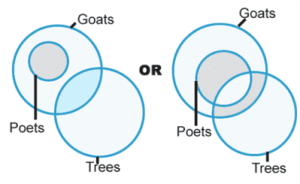Team Formation and Selection for CAT is one of the most important topics to prepare for, to crack the DILR (Data Interpretation and Logical Reasoning) section of the exam. The questions belonging to this topic are quite similar to Arrangements and Sequencing, which also another topic in logical reasoning.
Concept
Questions in Team Formation and Selection for CAT provide a set of people or a collection of objects. Additionally, they provide you with certain conditions. According to the conditions that are given, you must make choices to form the team. We recommend you to note down main points of the conditions from the data that is provided. Subsequently, each question may also introduce additional conditions to apply in certain scenarios. That’s why be mindful when reading the clauses and their relative situations.
Understanding Clauses and Keywords
1. At least one element — This means one or more than one. We can denote it as 1+ when noting down the clauses.
2. At most one element — It means maximally one, that is, either zero or one. We can denote it as 0/1.
3. At most two elements — It means maximally two, that is, zero, one, or two. We denote it as 0/1/2.
4. If you select A, then you also have to select B.
We can draw the following inferences from the above statement:
(a) If A is selected, B has to be selected.
(b) No case is possible where A is selected and B is not selected.
(c) A case is possible where B is selected, but A may or may not be selected.
(d) If B is not selected, then we can conclude A is also not selected, consequently.
5. Only if A happens then B happens.
We can draw the following inferences from the above statement:
(a) B is selected only when A is selected.
(b) B is not selected when A is not selected.
6. Either you can select A or B.
We can draw the following inferences from the above statement:
(a) B has happened, but now A cannot happen.
(b) A has happened, but now B cannot happen.
Approach with Example
Three adult women (R, S, and T), two adult men (U and V), and four children (W, X, Y, and Z) are going to watch a movie. Though, during the online booking of the tickets, they realized that the nine seats available for the show are in three different classes —Silver Class, Gold Class and Lounge. The layout also showed that in each class, three adjacent seats are available.
To watch the movie, they decide to have the three groups of three members each as per the following conditions:
- No adults of the same gender can be together in One group.
- W cannot be in R’s group.
- X must be in a group with S or U, or both.
Questions:
1. If R is the only adult in one group, the other members of her group must be
(a) W and Y
(b) X and Y
(c) X and Z
(d) Y and Z
2. Which of the following pairs of people can be in the same group as W?
(a) R and Y
(b) S and U
(c) S and V
(d) U and V
3. Any of the following pairs of people could be in a group with X, except:
(a) R and U
(b) S and T
(c) S and U
(d) S and W
Solution:
According to the rules, W and R cannot be in the same group. No two adults of the same gender can be in the group strictly. Consequently, no group can be formed using R and U, R and V, S and U, S and V, T and U, and T and V.
Addressing Question 1, option (a) is not possible since as per the clause given W cannot be in R’s group. In the same way, Option (b) and option (c) is not possible since as per the clause given X must be in a group with S or U or both. Option (d) is correct as it remains after eliminating the other options and it follows the rules given.
Addressing Question 2, option (a) is not possible since W cannot be in R’s group. Likewise, Option (b) is incorrect because at least either S or U must be in group with X. Option (d) is incorrect because it goes against the rules of the question asked as U and V are two adults of the same gender. Option (c) is correct because neither does the group formed contains two adults of the same gender nor does it go against other rules given.
Addressing Question 3, option (a) is incorrect because it can be in a group with X. Similarly, Option (c) and Option (d) are incorrect because they adhere to the rules given and can be in a group with X. In conclusion, option (b) is correct since the pair of S and T cannot be in a group with X as they are two adults of the same gender.
Our CAT coaching Kolkata hopes this article helped you understand the approach to take to solve questions belonging to Team Formation and Selection. Always remember that practice is the key to mastery. We wish you luck with your preparation!






